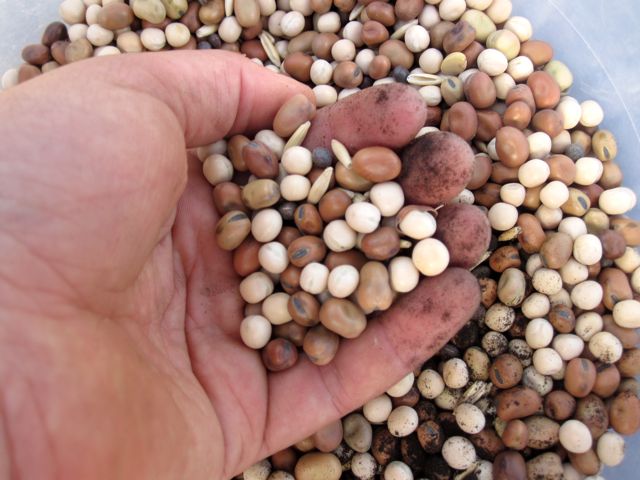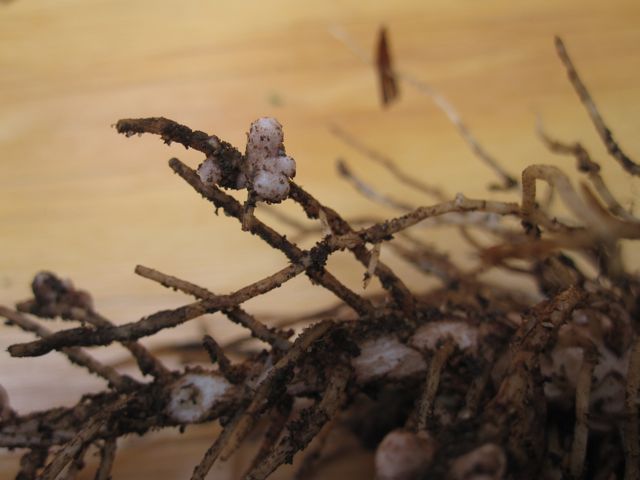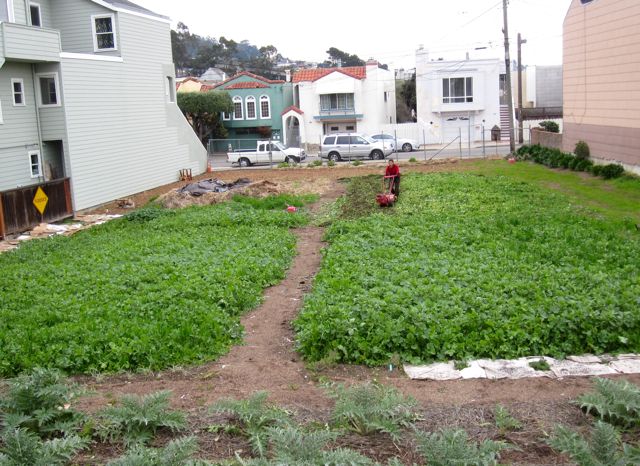cover crop and nitrogen fixation
January 25th, 2011 by brookeIn October and November we planted a cover crop or ‘green manure’ in the front field. We used a mix from Peaceful Valley that included dwarf gray peas, bell beans, vetch and oats. After two and a half months of sun and rain, the peas and bell beans are flowering and it’s about ready to cut down and till under. It is certainly a lot of work to seed a whole field and let it grow only to cut and till it under without harvesting anything. But it is absolutely worth it to increase the organic matter in the soil, fix nitrogen and sequester nutrients for the health of the crops to come. Nitrogen is an essential plant nutrient that supports new growth. It can either be supplied by petroleum-based synthetic fertilizers, by nitrogen fixation from the atmosphere, or by the release of ammonium through the decomposition of organic matter.
Nitrogen fixation is an amazing process. I don’t understand the complicated plant biology and chemistry behind the magic, but here is my basic understanding: Bell beans, peas and vetch and other plants in the Fabaceae or Legume family have developed a symbiotic association with soil dwelling bacteria called rhizobia. Together they have the capacity to ‘fix’ nitrogen—turn biologically unavailable atmospheric nitrogen (NH2) to biologically available nitrogen (NH3). A large percentage of our atmosphere is made up of nitrogen (around 70%) but it can not be utilized by plants until it goes through this process. The legumes and the rhizobia can each survive independently but they both benefit from their association. The bacteria ‘infects’ the root cells of the legume, which responds by forming inflamed nodules around the site of the infection. When you pull up a plant and see that the roots are covered in little bumps, it is evidence of the symbiotic relationship in action. The legume plant shares with the rhizobia the sugars it makes through photosynthesis, and the rhizobia in return offers the NH3 that it has fixed.
After you cut the green manure crop down and till it under, the soil is full of organic matter rich in nitrogen which it releases into the soil over time as it breaks down. We used a weedwacker to chop it down and a rototiller to turn the crop under. I love to imagine what is going on under ground now as the freshly cut favas and peas are decomposing and exuding their embodied nutrients.



